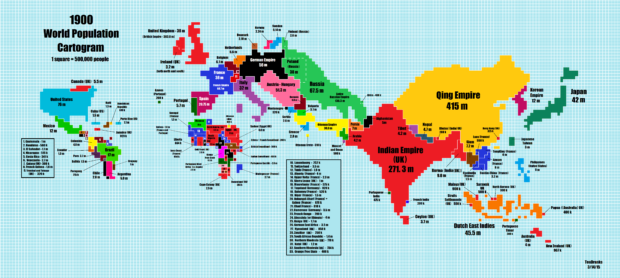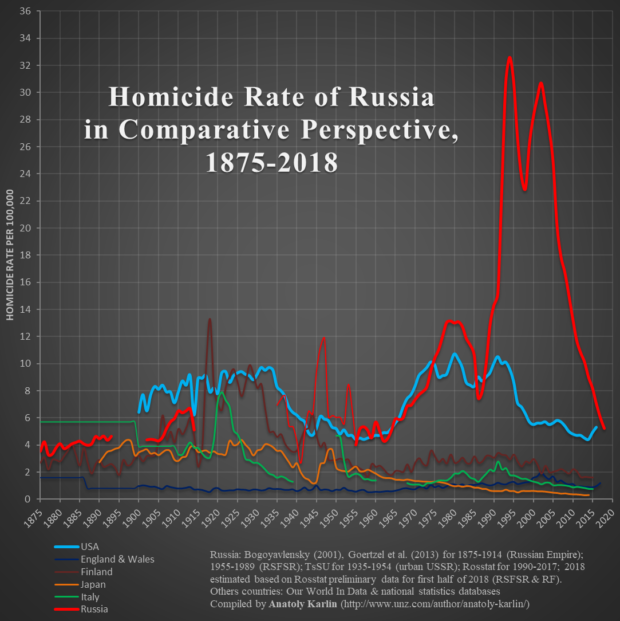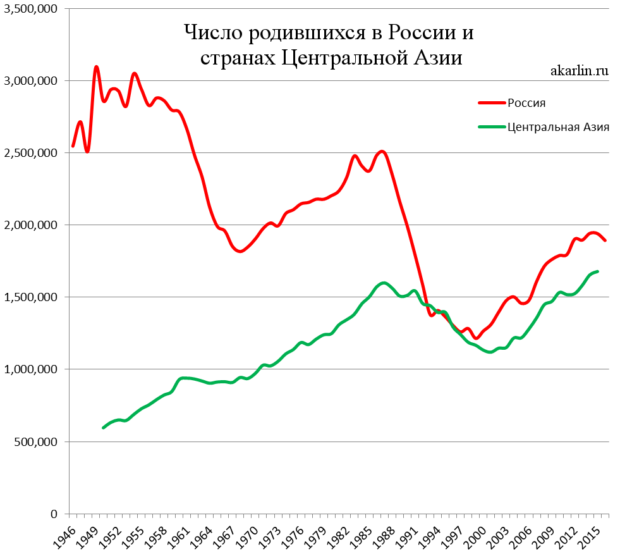I am not going to cover things that well-informed normies already know: How Israel is a weird outlier in fertility by First World standards, and the collapse of fertility in the Islamic world; how life expectancy has been soaring nearly everywhere; the “Great White Death” in the US and how all races in the US outperform their counterparts elsewhere, except for American Whites, who live less than almost all Europeans. Nor am I going to cover truly banal stuff, such as how tiny Bangladesh has more people than Russia. Nor particularly controversial stuff such as Eurabia, Great Replacement, etc. which I have covered elsewhere.
For all of this you have websites like Our World in Data and books by Steven Pinker.
I am instead going to focus on the truly little known and esoteric that I happen to find most interesting, especially from a historical or futurist perspective.
***
Demographic Geopolitics
(1) The world population of Greeks has been steady at ~10 million since the age of Alexander the Great. Their percentage of the world total plummeted from ~5% to slightly more than 0.1% today.
Source: Hansen, Mogens Herman. 2008. “An Update on the Shotgun Method.” Greek, Roman and Byzantine Studies 48 (3): 259–86.
(2) In 1900, Europe’s population (~400M) was quintuple that of Sub-Saharan Africa’s (~80M).
By 2100, Sub-Saharan Africa’s population (~4B) will be eight times as great as Europe’s (~650M).
Quite the reversal!
Source: Maddison; UN World Population Prospects.
(3a) Comparing the populations of modern nation-states to their medieval (pre-Black Death) counterparts is a fascinating exercise:
- France grew only 3x from ~20M to today’s ~65M
- England: 10x from ~6M to ~60M
- Italy: 7x from ~9M to ~60M
- Germany: 8x from ~10M to ~82M
- India: 15x from ~100M to ~1.7B (including Pakistan & Bangladesh)
- China: 15x from ~100M to ~1.4B
- Byzantines-Greeks remained at just ~10M (see above)
- Russian lands 30x from ~6M to ~190M
Source: Maddison
(3b) So despite the vast losses of Russia’s demographic potential during the 20th century, it still did rather well in the long-term, increasing its share of Europe’s population from ~5% to ~20% (~25% if inc. UKR/BEL). Swapped places with France in this respect. Glory to the musket and the potato!
(3c) At a larger scale, while both Europe and China were at ~100M in Middle Ages, now China has twice as many people, 1.4B to 700M. The advantages of backwardness – delayed fertility transition left more time for population to soar.
(4) France was the world’s first modern nation to undergo the fertility transition. It had its genesis with the French nobility during 18C. Subsequently, France would fall from having 1/5 Europe’s population in Middle Ages to <10% by late 19C.
Source: Spolaore, Enrico, and Romain Wacziarg. 2019. “Fertility and Modernity.” Working Paper Series. National Bureau of Economic Research.
(5) Huge demographic losses on the level of World War II in Eastern Europe were typical in the Malthusian era.
- 30 Years War in Germany, Mongol invasion of Russia and Persia, reduced their populations by a third.
- Wars & anarchy accompanying the end of dynasties usually killed 33%-50% of Chinese.
(6) Were the Turks the big demographic winners of the 20th century?
- 1914: 13.7M Turks vs. 10M Armenians + Greeks (1.3:1) & ~170M in Russian Empire – precarious.
- 2017: 80.8M Turks vs. 13.7M Greeks+Armenians (6:1) & ~150M in RF – secure as never before.
(7) The population ratio between Russia and the Ukraine fell from less than 3:1 to almost 5:1 since 1992. It is ironic that Ukrainian independence has been worse for Ukraine’s population balance vis-a-vis Russia than anything that Lazar Kaganovich and the Nazis did.
(8a) Russia just within its current borders, assuming otherwise analogous fertility and migration trends, would have had 261.8 million people by 2017 without the triple demographic disasters of Bolshevism, WW2, and the 1990s – that’s double its actual population of 146 million.
Source: Демографические итоги послереволюционного столетия & Демографические катастрофы ХХ века by Anatoly Vishnevsky
(8b) According to my very rough calculations, based on various sources, the population change for each of the following in their current borders between 1913/14 and 1945/46 was about as follows:
- Russia – 91M/97M
- Ukraine – 35M/34M
- Belarus – 7.5M/7.7M
Assuming a threefold expansion in all of these populations, we could have been looking to a Russian Empire or Republic with a further ~120M fully Russified Belorussians and largely Russified Ukrainians, for a total Slavic population of almost 400M.
That’s twice bigger than the number of White Americans today, the most populous single European ethnicity, and almost as much as all of today’s Western Europe.
(8c) Total population of a hypothetical Russian Empire that also retained Central Asia and the Caucasus, and that hadn’t been bled white by commies, Nazis, and Westernizers during the course of the 20th century, would likely have been not that far off from Dmitry Mendeleev’s 1906 projection of 594 million for 2000.
Source: Understanding Russia by Dmitry Mendeleev (yes, the chemist).
(9) So far as I can tell, the Latvians, Estonians, and Ashkenazi Jews are the only peoples with fewer people today than in 1914. It is ironic that they played the most disproportionate roles (per capita) in cementing Bolshevism in Russia. God must really hate commies.
(10) That said, the Irish have an even more extreme and unique anti-record: There are fewer of them today (~6.6M in all Ireland) than in 1840 (8.5M)! I wonder what they did to anger God so.
(11) Communism isn’t always an unmitigated demographic disaster. As @Cicerone973 has discovered, for the first time ever, births in Best Korea (25M) probably overtook South Korea (52M) last year.
(Even if, as Myers argued, Songun/Juche has almost zilch to do with Marxism).
(12) The wonders of Maoism: Between 1960 and 1978, the share of China’s urban population FELL from 20% to 18%.
Source: China’s Economy by Arthur K. Kroeber.
(13) We have no solid idea if China’s TFR is ~1.6 children per woman, ~1.1 children per woman, or anywhere in between, e.g. see here, here, and here.
This seems rather important given China’s importance.
Russian Demographics
(14a) Russia’s middle-aged male mortality in the 1990s and early 2000s was worse than under late Tsarism. In particular, alcohol abuse accounted contributed to about a third of all deaths. (This has all since drastically improved).
(14b) Contra Pinker, Russia has seen a “de-civilizing” process in terms of homicide rates (and many other indicators of social wellbeing) in the last third of the 20th century. This was perfectly correlated with its alcoholization epidemic.
In recent years, the Russian homicide rate has retreated back to its pre-1965 “steady state” of ~5/100,000.
Of course, there is still plenty of lost ground, since c.1900 Russia’s rates were similar to those of Italy, Finland, and Japan, whereas all these countries are now at least 5x less violent.
(14c) During the later Soviet era, the Ukraine consistently had a 2 years higher life expectancy than Russia – a difference that dates back well to the 19th century (probably on account of them drinking less, even back then).
But Ukraine has been stagnating since early 2010s; still below its 1960s all time peak, Russia overtook by 2018.
(15) Central Asians went from 10% of Russian population in 1914 to half today, while births have almost equalized since the early 1990s.
Central Asians increasingly looking to work in South Korea, which is ~20 years ahead of China in terms of demographic and socio-economic development. Once China’s urbanization maxes out at ~75-80% by ~2040, I expect labor migration from C. Asia to reorient there.
 Amazon.com Gift Card i...
Buy New $10.00
(as of 08:25 UTC - Details)
Amazon.com Gift Card i...
Buy New $10.00
(as of 08:25 UTC - Details)
 Amazon.com Gift Card i...
Buy New $50.00
(as of 01:10 UTC - Details)
Amazon.com Gift Card i...
Buy New $50.00
(as of 01:10 UTC - Details)
 Amazon.com Gift Card i...
Buy New $25.00
(as of 03:30 UTC - Details)
Amazon.com Gift Card i...
Buy New $25.00
(as of 03:30 UTC - Details)
 Amazon.com Gift Card i...
Buy New $15.00
(as of 12:45 UTC - Details)
Amazon.com Gift Card i...
Buy New $15.00
(as of 12:45 UTC - Details)















